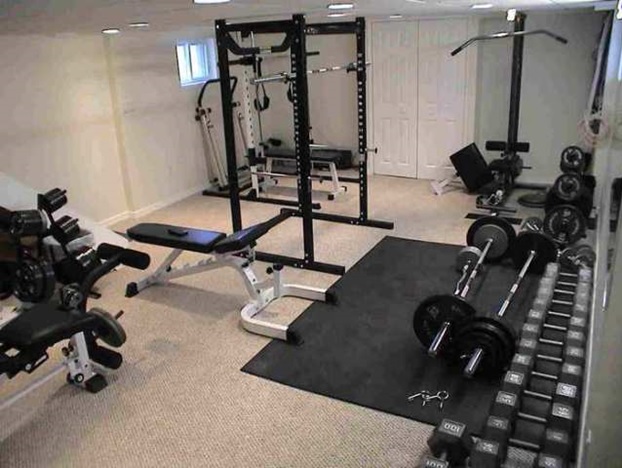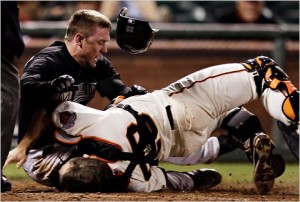Posted on
September 22, 2018 by
John Harris
 If you’re a sports lover, then you might have noticed something: it’s not always the cheapest activity on earth. From the equipment to the clothes to supporting your local sports team, there’s always one cost or another to pay. But can we call it ‘expensive’? We’re not too sure. After all, there are millions – billions? – of people around the world who engage in some sort of physical activity, and most of them are not rich. Below, we take a look at the various costs attached to sports and try to come to some conclusion about the matter.
If you’re a sports lover, then you might have noticed something: it’s not always the cheapest activity on earth. From the equipment to the clothes to supporting your local sports team, there’s always one cost or another to pay. But can we call it ‘expensive’? We’re not too sure. After all, there are millions – billions? – of people around the world who engage in some sort of physical activity, and most of them are not rich. Below, we take a look at the various costs attached to sports and try to come to some conclusion about the matter.
The Equipment
You need some equipment to play sports, even if that’s just a car to take you to the track. But most sports require much more than this. Let’s take, say, soccer. You’d need a ball, the right footwear, and a goal if you’re going to play a version of the sport that looks like the real thing. The ball will be cheap, but everything else? Those costs add up, and in the case of the footwear, will need to be replaced over time. The good news is that you generally only need to buy the bulky, most expensive pieces of equipment once.
Having the Right Gear
You can’t go out to engage in your favorite sport wearing your everyday clothes! You need the shorts, shoes, and shirts – not to mention various other apparel – that has been custom made for sports. And generally, you want to buy the best stuff: the sport is more comfortable to play if you’re wearing high-quality clothing that was designed for top-end performance. Walk into a sports store, and you might blink twice at the cost of these items, but there are cheaper ways to buy. Take a look at Nike discounts and deals, and you’ll be able to make big savings on your essential sportswear. The best clothing only looks expensive to begin with. Once you know where to look, things become much more manageable. Read the rest of this entry →
Tags: Sports Equipment
Category
Health & Fitness, Sports equipment, Sports Fitness
Posted on
September 12, 2018 by
Joe Fleming

Alan Webb
Nobody would ever argue that their flat feet offered any physical advantage to their fitness regime. Instead, the postural deformity of fallen arches is known to cause an array of uncomfortable complications, including Achilles tendonitis, arthritis, plantar fasciitis, or shin splints.
However, in modern times, flat feet are no longer considered to be the immovable obstacles that they once were, and these troubles are hardly enough to prevent ambitious runners from reaching their full potential. In fact, many of the world’s greatest runners who were seemingly cursed by flat feet still managed to find a way to move faster than anyone else. To celebrate these triumphs, here is a list of three highly impressive flat-footed athletes, who will hopefully motivate you to keep your own arches marching.
Saïd Aouita
Considered one of the first famous Arab sportspeople, Moroccan born Saïd Aouita boasts an extensive list of achievements which left his competitors in the dust. His passion was firmly fixed to the track and field events, and he left his permanent mark on that scene when he won the 5,000 meters at the 1984 Summer Olympics. Saïd’s impressive résumé doesn’t end there either, as he’s set many world records too, including the fastest time for the 1,500 meters (at 3:29.46), 2,000 meters (at 4:50.80), 3,000 meters (at 7:29.45), and twice for the 5,000 meters (at 13:00.40 and 12:58.39). What’s more, these are only a small portion of the man’s complete accomplishments.
Despite attaining such monumental successes, Saïd Aouita admits that his fallen arches have been an issue during his entire career. ”My only problem is that I have flat feet, which promotes tendinitis,” he admitted to French newspaper L’Equipe. Since then, Aouita has credited his special shoes for providing the additional support he needs, which is the same solution that many similar runners have discovered for themselves. Supplementing fallen arches with an orthotic insole can help balance out the pressure on your feet and better support the adjoining ligaments and tendons.
Alan Webb
In 2007, American track and field athlete Alan Webb broke the U.S. Record for the fastest mile time ever, clocking in at 3:46.91. Said record still remains unbeaten to this very day. Alan is also known for his representation of the United States during the 2004 Summer Olympics where he ran the 1,500-meter race. Due to such an impressive biography, it’s no surprise to anyone that Nike hired him to represent their brand from 2002 – 2013. Read the rest of this entry →
Tags: Alan WebbSaid Aouita
Category
Health & Fitness, Outdoor Activities, Sports Fitness, Track & Field
Posted on
September 12, 2018 by
Michael Sanduso
 There’s something exciting about getting back into the habit of working out. Before you begin comparing what different fitness equipment stores have to offer, set some ground rules for choosing only the best. Here are a few tips that will help.
There’s something exciting about getting back into the habit of working out. Before you begin comparing what different fitness equipment stores have to offer, set some ground rules for choosing only the best. Here are a few tips that will help.
Start With the Basics
It’s been a long time since you worked out regularly. Now is not the time to invest in a lot of equipment that is beyond your ability. Focus instead on basic equipment like benches, weights, and other resources that you can use to tone those muscles and build endurance. The day will come when you can add more equipment and take advantage of the great pricing for new exercise machines for sale. For now, simple and basic will serve you well.
A Little Fun Won’t Hurt
While you may be sticking with the basics for now, that doesn’t mean you can’t have a little fun at the same time. You’ll find that the better fitness equipment stores offer equipment that almost makes it seem as if you are playing instead of working out. Remember how much fun it was to jump rope when you were a kid? Consider adding some time jumping rope to your workout routine. It’s a great stress reducer and works out more muscles groups than most people realize. Jumping rope is also a lot of fun even if you aren’t particularly stressed right now. Read the rest of this entry →
Tags: Home Gym
Category
Health & Fitness, Sports equipment, Sports Fitness
Posted on
August 28, 2018 by
Joe Fleming
 Back injuries are a common issue among athletes, especially those who compete at a high level.
Back injuries are a common issue among athletes, especially those who compete at a high level.
For example, before he retired, Olympic sprinter Usain Bolt had to take a significant amount of time off from his sport to deal with severe back pain. Professional golfer Tiger Woods also had to take time off as he underwent surgery to repair a damaged disc.
You don’t have to be a professional athlete to suffer from a back injury, though. Whether you’re an amateur or a seasoned pro, it’s important to know how to treat and prevent these common back injuries.
Common Back Injuries
The following are the most common types of back injuries that athletes tend to experience:
Lower Back Injuries
Many athletes struggle with lower back injuries. The following are some of the most common injuries they experience:
-
Back strains (injuries to the soft tissues — muscles, tendons, ligaments, nerves, blood vessels, etc.)
-
Spondylolysis (stress fractures in the lower lumbar spine)
-
Herniated discs (the nucleus — center of the discs of the spine — ruptures outside of the normal place)
Runners, golfers, gymnasts, and weightlifters most frequently experience lower back injuries. Read the rest of this entry →
Tags: Back injuriesUsain Bolt
Category
Health & Fitness, Sports Fitness, Sports Medicine
Posted on
August 18, 2018 by
Joe Fleming
 At first glance, golf might seem like a fairly safe sport with low injury risk. In reality, though, golfers’ bodies can take quite a beating. This is especially true for professional golfers like Tiger Woods and Jim Furyk, both of whom have had to take breaks from their careers to let serious injuries heal.
At first glance, golf might seem like a fairly safe sport with low injury risk. In reality, though, golfers’ bodies can take quite a beating. This is especially true for professional golfers like Tiger Woods and Jim Furyk, both of whom have had to take breaks from their careers to let serious injuries heal.
Golf injuries are definitely possible, but they’re not inevitable. By taking the proper precautions, you can keep injuries at bay and continue to keep the sport as a regular part of your life.
Read on to learn about some of the most common golf injuries, as well as what you can do to prevent them.
Common Golf Injuries
Some of the most common golf injuries that you should take extra care to avoid include:
Golfer’s Elbow
Golfer’s elbow, also known as medial epicondylitis, is one of the most common injuries a golfer can experience.
This injury is characterized by inflamed elbow tendons, as well as pain, swelling, and tenderness on the inside portion of the elbow. Golfer’s elbow is most often the result of overuse (i.e., repeating the same motion over and over again without enough rest). Read the rest of this entry →
Tags: golf injuries
Category
Golf, Health & Fitness, Sports Medicine
Posted on
August 09, 2018 by
Joe Fleming
 From Titans’ running back Leon Washington to Giants’ catcher Buster Posey, athletes throughout the years have had a history of breaking bones. Fractures are one of the most common injuries an athlete can deal with, and, considering the amount of time they take to fully heal, they’re not exactly fun to face.
From Titans’ running back Leon Washington to Giants’ catcher Buster Posey, athletes throughout the years have had a history of breaking bones. Fractures are one of the most common injuries an athlete can deal with, and, considering the amount of time they take to fully heal, they’re not exactly fun to face.
Getting diagnosed with a fracture is never pleasant. But, did you know that there are dietary changes you can make that will speed up the recovery process and get you back in the game faster?
Whether you’re a professional or an amateur athlete, these nutrition tips will help you heal and become more resilient to future injuries.
1. Consume Sufficient Calcium
You probably grew up being told to drink your milk to keep your bones healthy and strong. Well, your mom was right. Although, you don’t necessarily need to drink milk or eat other dairy products to get sufficient amounts of calcium.
If you don’t tolerate dairy, you can get plenty of calcium from the following food sources:
You can also use a calcium supplement if you feel that you need additional help meeting the minimum daily requirement (anywhere from 1,000 to 1,200 milligrams per day). Read the rest of this entry →
Tags: Buster Posey
Category
Baseball, Football, Health & Fitness
 If you’re a sports lover, then you might have noticed something: it’s not always the cheapest activity on earth. From the equipment to the clothes to supporting your local sports team, there’s always one cost or another to pay. But can we call it ‘expensive’? We’re not too sure. After all, there are millions – billions? – of people around the world who engage in some sort of physical activity, and most of them are not rich. Below, we take a look at the various costs attached to sports and try to come to some conclusion about the matter.
If you’re a sports lover, then you might have noticed something: it’s not always the cheapest activity on earth. From the equipment to the clothes to supporting your local sports team, there’s always one cost or another to pay. But can we call it ‘expensive’? We’re not too sure. After all, there are millions – billions? – of people around the world who engage in some sort of physical activity, and most of them are not rich. Below, we take a look at the various costs attached to sports and try to come to some conclusion about the matter.



